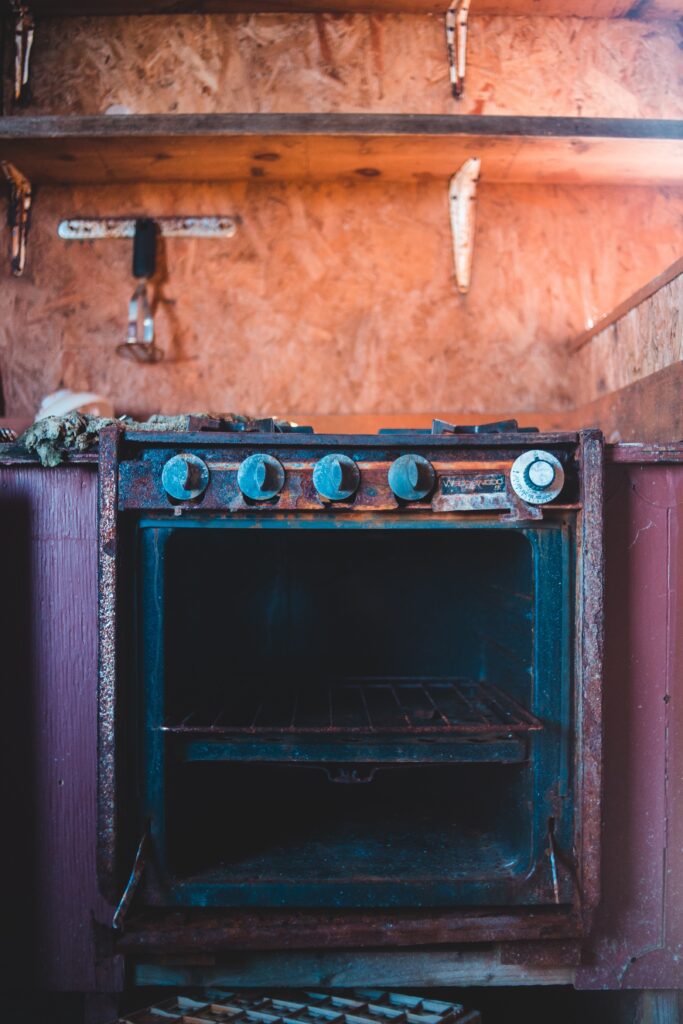In the battle against mold, the kitchen can be a tricky battleground with its hidden spots and constant exposure to moisture. Mold can take refuge under the sink, behind appliances, inside cabinets, and even in the rubber seals on your trusty kitchen gadgets. To stay one step ahead of mold, it’s important to regularly inspect for leaks, give surfaces a good wipe down, and use moisture-absorbing products. You can also combat mold by cleaning with mold-killing solutions and ensuring proper ventilation. Don’t forget about your dishwasher and refrigerator too; they can become mold magnets if not properly cleaned and dried. And for those planning a kitchen renovation, consider using mold-resistant materials and natural remedies to prevent any unwanted mold growth.
Understanding the Conditions that Promote Mold Growth
Mold is a common problem in kitchens, as the environment is often moist due to activities like cooking and washing dishes. Understanding the conditions that promote mold growth is essential in preventing its occurrence. By identifying the characteristics of mold and recognizing why kitchens are prone to mold, you can take the necessary steps to keep your kitchen mold-free.
Identifying the characteristics of mold
Mold is a type of fungus that thrives in moist environments. It reproduces through spores and can spread rapidly if not properly controlled. Mold can appear in various colors, including green, black, or white, and has a distinct musty odor. When mold grows, it often forms a fuzzy or slimy texture on surfaces. It can cause discoloration and deterioration of materials, leading to structural damage if left unaddressed.
Understanding why kitchens are prone to mold
Kitchens are particularly susceptible to mold growth because they are exposed to moisture and food particles. When cooking, steam and humidity can become trapped in the air, creating an ideal breeding ground for mold. Additionally, water splashes and spills can accumulate in hidden areas, such as under the sink or behind appliances, providing moisture for mold to thrive. Without proper ventilation and regular cleaning, mold can easily develop and spread in the kitchen.
Common Hidden Spots for Mold in the Kitchen
To effectively prevent mold growth in your kitchen, it’s important to be aware of the common hidden spots where mold tends to thrive. By regularly inspecting these areas and taking preventive measures, you can minimize the risk of mold infestation in your kitchen.
Under the sink
The area under the sink is a prime location for mold growth due to its proximity to water sources. Leaky pipes or improperly sealed connections can cause moisture to accumulate, providing an ideal environment for mold to flourish. Regularly inspecting for leaks and promptly addressing them can help prevent mold from taking hold in this area.
Behind appliances
Appliances such as the refrigerator and dishwasher often have spaces behind them that are not frequently cleaned. Moisture from condensation or water spills can accumulate in these hidden areas, promoting mold growth. Moving the appliances regularly to clean and dry these spaces can help prevent mold from developing.
Inside cabinets and pantries
When food items are stored in humid environments, moisture can build up in cabinets and pantries, creating conditions suitable for mold growth. It is essential to wipe down surfaces regularly and ensure proper ventilation in these enclosed spaces to prevent mold from spreading.
Garbage disposal and drain
Food particles and moisture that collect in the garbage disposal and drain can create an environment conducive to mold growth. Regular cleaning and disinfecting of these areas, along with running water and using garbage disposal cleaning techniques, can help prevent mold from occurring in these hidden spots.
Rubber seals on appliances
Rubber seals on appliances, such as the refrigerator or oven, provide a prime habitat for mold. These seals can trap moisture and organic debris, creating an environment where mold can thrive. Regularly inspecting and cleaning these seals can prevent the growth of mold.
Behind backsplashes and wall tiles
The area behind backsplashes and wall tiles can accumulate moisture from water splashes and steam, leading to mold growth. Regularly cleaning and drying these surfaces, as well as properly sealing grout lines, can help prevent mold from appearing in these hidden spots.

Methods to Prevent Mold Growth in General
To maintain a mold-free kitchen, it is essential to take proactive measures to prevent mold growth. By incorporating these methods into your regular cleaning and maintenance routine, you can significantly reduce the risk of mold infestation.
Regular inspection for leaks
Inspect your kitchen regularly for any signs of leaks, such as dripping faucets or water stains. Promptly address any plumbing issues to prevent moisture accumulation and subsequent mold growth.
Wiping down surfaces regularly
Regularly wipe down kitchen surfaces, including countertops, backsplashes, and cabinets, to remove any food particles or moisture. Keep these areas clean and dry to prevent mold from finding a suitable habitat.
Using moisture-absorbing products
Utilize moisture-absorbing products, such as dehumidifiers or silica gel packets, to reduce excess moisture in the air. This can help inhibit mold growth and create a less favorable environment for mold spores to thrive.
Cleaning with mold-killing solutions
When cleaning your kitchen, use mold-killing solutions or natural alternatives, like vinegar or tea tree oil, to eliminate any existing mold and inhibit its growth. These solutions are effective in killing mold spores and preventing them from spreading.
Ensuring proper ventilation in the kitchen
Good ventilation is crucial in preventing mold growth, as it helps to reduce humidity and remove moist air. Use exhaust fans or open windows while cooking or using water in the kitchen to improve airflow and minimize condensation.
Preventing Mold in Specific Kitchen Areas
In addition to general preventive measures, there are specific steps you can take to target common areas where mold tends to develop in the kitchen. By implementing these preventive strategies, you can effectively reduce the likelihood of mold growth in these specific areas.
Preventing mold under the sink
Regularly inspect the area under the sink for any signs of leaks or moisture. Repair any plumbing issues promptly to prevent water accumulation. Consider installing a moisture barrier or using waterproof materials to protect this area from moisture exposure.
Preventing mold behind and under appliances
Regularly move appliances, such as the refrigerator and dishwasher, to clean and dry the spaces behind and underneath them. This will prevent moisture buildup and inhibit mold growth. Ensure proper ventilation around these appliances to improve airflow and minimize condensation.
Preventing mold inside cabinets and pantries
Keep cabinets and pantries well-organized and regularly clean them to prevent moisture buildup. Install ventilation grilles or small fans to improve air circulation in these enclosed spaces. Avoid overstocking food items, as crowded shelves can hinder proper airflow and create humid conditions.
Preventing mold in garbage disposals and drains
Clean and disinfect your garbage disposal and drain regularly to remove food particles and prevent mold growth. Use garbage disposal cleaning techniques, such as grinding ice cubes or citrus peels, to eliminate odors and inhibit mold development. Run water for a few seconds after using the garbage disposal to flush out any remaining debris.
Preventing mold behind backsplashes and wall tiles
Properly seal grout lines behind backsplashes and wall tiles to prevent moisture from seeping in. Regularly clean these surfaces with mold-killing solutions or natural alternatives to inhibit mold growth. Ensure that the areas behind backsplashes and wall tiles are properly ventilated to minimize condensation.

Prevention Tips for Mold in Appliances
Appliances in the kitchen, such as dishwashers, refrigerators, ovens, and microwaves, can also be breeding grounds for mold if not properly maintained. Implement these prevention tips to keep your appliances mold-free.
Preventing mold in dishwashers
Regularly clean your dishwasher to remove any food debris or residue that can contribute to mold growth. Wipe down the rubber seals and gaskets, as these areas can trap moisture and foster mold growth. Run an empty dishwasher cycle with vinegar or a commercial dishwasher cleaner every few months to disinfect and eliminate any mold spores.
Preventing mold in refrigerators
Regularly clean and defrost your refrigerator to prevent food spoilage and mold growth. Check and clean the drip pan regularly, as it can collect moisture and provide an environment for mold to thrive. Ensure proper airflow in the refrigerator by avoiding overcrowding and allowing space between items to promote better ventilation.
Preventing mold in ovens
Regularly clean your oven, including the interior walls and racks, to prevent the buildup of food debris that can contribute to mold growth. Remove any spilled food or liquids promptly and wipe down surfaces with a mold-killing solution or natural alternatives like vinegar. Properly vent your oven while cooking to reduce moisture buildup.
Preventing mold in microwaves
Clean your microwave regularly, both the interior and exterior, to remove any spills or food debris that can lead to mold growth. Use mold-killing solutions or natural alternatives like vinegar to disinfect and inhibit mold development. Ensure proper ventilation by leaving the microwave door open when not in use to promote airflow and prevent moisture accumulation.
Using Mold-Resistant Materials in Kitchen Construction and Renovation
When constructing or renovating your kitchen, it is wise to incorporate mold-resistant materials to minimize the risk of mold growth. These materials are specially designed to resist moisture and inhibit the growth of mold spores.
Best materials to use for prevention
Opt for materials such as mold-resistant drywall, moisture-resistant paint, and ceramic or porcelain tiles with mold-resistant grout. These materials are engineered to withstand moisture and are less likely to become a breeding ground for mold. Additionally, using stainless steel or solid surface countertops can help prevent moisture absorption and inhibit mold growth.
Renovation techniques to prevent mold
During kitchen renovation, it is important to address any underlying moisture issues. Repair any leaks or plumbing problems before installing new materials. Additionally, ensure proper insulation and ventilation to reduce condensation and promote airflow. By addressing these issues during the renovation process, you can create a kitchen environment that is resistant to mold growth.

Natural Remedies for Preventing Kitchen Mold
If you prefer natural alternatives to chemical cleaners, several household ingredients can effectively inhibit mold growth in your kitchen. These natural remedies are safe to use and have antimicrobial properties that help deter mold development.
Using vinegar
Vinegar is a versatile natural cleaner that can kill mold and inhibit its growth. Mix equal parts white vinegar and water in a spray bottle and apply it to moldy areas. Let the vinegar solution sit for a few minutes before wiping it clean with a damp cloth. Regularly using vinegar as a cleaning solution can help keep mold at bay.
Using baking soda
Baking soda is another natural ingredient that can effectively eliminate and prevent mold growth. Mix one teaspoon of baking soda with water to create a paste and apply it to moldy surfaces. Scrub gently with a brush and rinse with water. Baking soda’s abrasive properties help remove mold stains and inhibit further growth.
Using tea tree oil
Tea tree oil is a potent natural fungicide that can effectively kill mold spores. Mix a teaspoon of tea tree oil with a cup of water in a spray bottle and apply it to moldy areas. Let it sit for a few hours before wiping it clean. Tea tree oil has a strong scent, so it’s best to use it in well-ventilated areas.
Using grapefruit seed extract
Grapefruit seed extract is a natural antimicrobial agent that can inhibit the growth of mold and other fungi. Mix about 20 drops of grapefruit seed extract with two cups of water in a spray bottle and apply it to moldy surfaces. Allow it to sit for a few minutes before wiping it clean. Grapefruit seed extract is safe to use and does not produce any strong odors.
How to Handle a Mold Outbreak
In the event of a mold outbreak in your kitchen, it is important to take immediate action to prevent further mold growth and mitigate its effects. By following these steps, you can effectively address a mold problem in your kitchen.
Steps to take immediately after finding mold
First, ensure your safety by wearing protective gear such as gloves, goggles, and a mask. Then, isolate the affected area by closing doors and sealing off vents. Turn off any sources of moisture, such as faucets or appliances, to prevent additional water damage. Thoroughly clean and disinfect the moldy surfaces using mold-killing solutions or natural remedies. If the mold covers a large area or is difficult to remove, consider seeking professional help.
When to call a professional
If the mold outbreak is extensive, covers a large area, or is persistent despite your efforts, it is advisable to call a professional mold remediation service. Mold professionals have the necessary expertise and equipment to safely remove and remediate mold infestations. They can identify the underlying causes of the mold and take appropriate measures to prevent future outbreaks.

The Health Risks Associated with Kitchen Mold
Mold in the kitchen poses several health risks that should not be ignored. It can adversely affect both your respiratory health and the safety of the food you consume. Understanding these health risks is crucial for maintaining a safe and healthy kitchen environment.
Allergies and respiratory problems
Exposure to mold can trigger allergies and respiratory issues, particularly in individuals who are sensitive or allergic to mold spores. Symptoms may include sneezing, coughing, wheezing, nasal congestion, skin rashes, and eye irritation. Prolonged exposure to mold can exacerbate these symptoms and potentially lead to more severe respiratory conditions.
The effects of mold on food safety
Mold can contaminate food and pose a risk to your health if consumed. Certain molds produce mycotoxins, toxic substances that can cause food poisoning or other adverse effects. It is essential to discard any moldy food and regularly inspect food storage areas to ensure food safety.
Long-term health risks of mold exposure
Extended exposure to mold can have long-term health effects, especially for individuals with compromised immune systems or pre-existing respiratory conditions. In severe cases, mold exposure can lead to chronic respiratory conditions, asthma, or other respiratory infections. To minimize the risk of long-term health complications, it is crucial to address mold issues promptly and take preventive measures to prevent future outbreaks.
Maintaining a Mold-Free Kitchen
While these preventive measures are effective in minimizing the risk of mold growth, it is important to maintain a regular cleaning and maintenance routine to ensure a mold-free kitchen environment. By following these guidelines, you can enjoy a clean and healthy kitchen for years to come.
Regular cleaning schedule
Establish a regular cleaning schedule for your kitchen, including wiping down surfaces, cleaning appliances, and thoroughly sanitizing any potential mold-prone areas. This routine maintenance will help prevent the buildup of moisture, food debris, and mold spores.
Proper food storage
Store food properly to prevent moisture buildup and the growth of mold. Seal containers tightly, ensure proper ventilation in pantry areas, and promptly discard any expired or moldy food items.
Regular appliance maintenance
Regularly maintain and clean your kitchen appliances to prevent mold growth. Refer to the manufacturer’s instructions for proper cleaning techniques and adhere to them. Pay close attention to rubber seals and gaskets, as these areas are prone to trapping moisture and fostering mold growth.
Ventilation improvements
Improve ventilation in your kitchen by installing or utilizing exhaust fans, opening windows, or using portable fans. Proper ventilation helps circulate air and reduce humidity levels, creating an environment less conducive to mold growth.
Humidity control
Monitor and control the humidity levels in your kitchen to prevent mold growth. Use dehumidifiers or moisture-absorbing products in areas prone to excess moisture. Keep an eye on condensation on windows, walls, or pipes and promptly address any issues to maintain a dry environment.
By incorporating these maintenance practices into your routine, you can ensure that your kitchen remains mold-free and create a healthy living environment for you and your family.
In conclusion, preventing mold growth in the kitchen requires a proactive approach and regular maintenance. By understanding the conditions that promote mold growth, identifying common hidden spots for mold, and implementing prevention methods, you can significantly reduce the risk of mold infestation. From regularly inspecting for leaks to maintaining proper ventilation and using mold-resistant materials, each preventive measure plays a crucial role in maintaining a mold-free kitchen. By following the outlined prevention tips, incorporating natural remedies, knowing how to handle a mold outbreak, being aware of the health risks associated with mold, and maintaining a regular cleaning schedule, you can enjoy a clean and healthy kitchen environment. With these preventative measures in place, you can promote a mold-free, safe, and enjoyable cooking experience for yourself and your loved ones.
